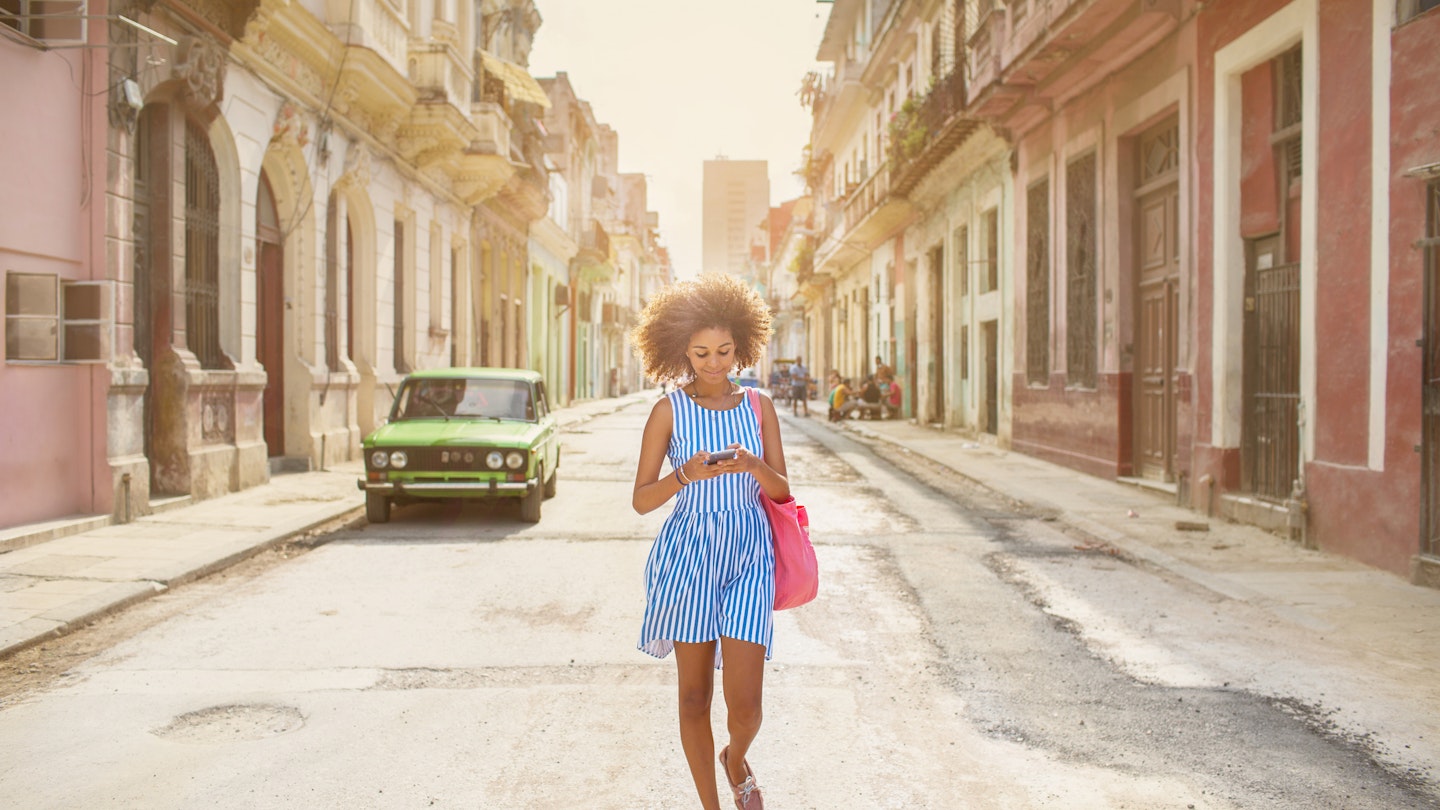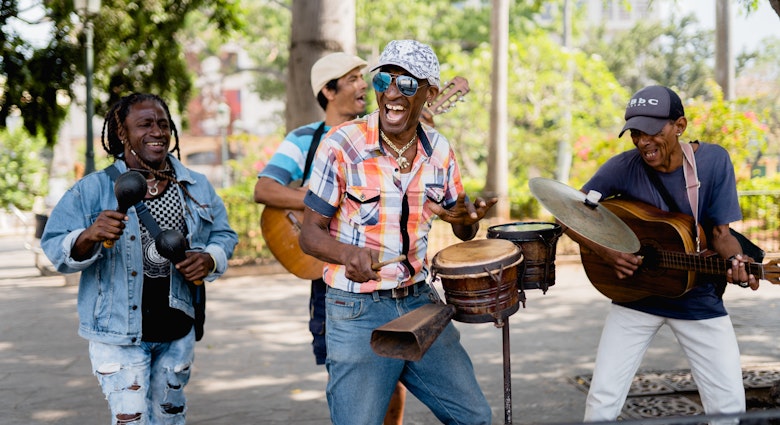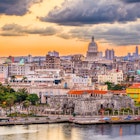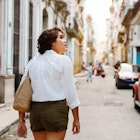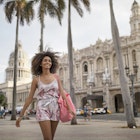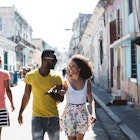For all its tropical charms, Havana isn’t the world’s most straightforward city for travelers.
A unique economic situation, top-heavy state bureaucracy and decades of isolation from its neighbor to the north (the USA) can place obstacles in the way of even simple activities.
But while travel in the Cuban capital can pitch you the occasional curveball, it’s rarely onerous and never dull. Ensure your trip to Havana goes smoothly with our top 20 things to know before you go.
1. Bring proof of insurance
Despite Cuba's extensive state healthcare system, visitors are required to have medical insurance to enter Cuba, and you’ll need to bring a digital or printed proof of your policy. Random checks are conducted at the airport; if you arrive without insurance, you’ll be asked to buy a Cuban policy at the airport.
2. Fill in an online immigration form in advance
With Cuba being one of the world's last Communist states, there's a bit of red tape to navigate. An online form called D’Viajeros containing immigration and health information must be completed by all travelers. You can digitally fill out the form up to 72 hours before you arrive in Cuba, so make this part of your pre-check-in preparations.
3. Different rules apply for US citizens
As a result of the strained political relationship between Cuba and the US, different rules apply for Americans traveling to Cuba. To visit, you'll have to apply for a travel license in one of 12 special categories.
There's no category for vacation, but visitors can often gain entry under the rather opaque “support for the Cuban people” category. Check out our detailed guide to the rules for US travelers.
4. Double-check you have a tourist card
To enter Cuba, all visitors need to present a completed Tourist Card. This travel document is usually available through your airline and is included in the price of many plane tickets, but check with your airline to make sure.
If your airline doesn't provide you with a Tourist Card, you can purchase one through a Cuban travel agency; costs range from US$50 to US$85. Twenty African and Asian countries require a formal visa to enter Cuba, so check the rules for your home country with your local Cuban representative before booking your tickets.

5. It's better to book accommodations in advance
Booking your accommodations before you arrive will not only guarantee you have a place to stay, it will also allow you to pay in advance and travel with less cash – a welcome situation considering the complicated rules for payments in Cuba.
Book a hotel through a reputable agency – Canada-based A Nash Travel has some excellent deals. If you’d prefer to stay in a casa particular (private homestay), use Lonely Planet’s listings to connect with owners directly via email or WhatsApp, or check out the options on Airbnb.
6. Wise up on the new money situation
The rules for making payments in Cuba have always been confusing, even to Cubans, and things have recently become even more confusing.
The country abolished the convertible Cuban peso (CUC) in January 2021 and took the US dollar out of circulation in June 2021, leading to massive inflation and the emergence of a rampant black market. The knock-on effect is a bewildering dual economy.
The official currency of Cuba is the Cuban peso (CUP), but foreign currencies are also widely accepted, especially by private businesses who need hard cash to buy non-rationed goods in special shops that allow purchases using Moneda Libremente Convertible (MLC) – basically, freely convertible currency.
State-run enterprises and banks use official exchange rates, but the superior services offered by private businesses generally reflect the more favorable black market exchange rates.
When buying something from a private business – be it a restaurant, casa particular or taxi service – it’s usually best to pay in a foreign currency. Always ask upfront what currencies are accepted and the exchange rate used for published peso prices.
The euro is the most interchangeable currency and the one preferred by Cubans. You can also use and exchange Canadian dollars and pounds sterling, but avoid US dollars.
When you first arrive, the best policy is to keep most of your money in a foreign currency and only change small amounts into pesos for incidental costs such as museum entry fees, concert tickets and tips. There are also plenty of things you can see and do for free in Havana.
7. Pack the right clothes to fit with your plans
The general dress code in Cuba is pretty casual. Jeans and a T-shirt or button-up shirt are standard attire for guys and girls, though some Cuban women wear colorful rumba dresses for special occasions.
The only real dress code is in cinemas, theaters, nightclubs and upscale restaurants, where male patrons are required to wear long trousers and shirts with sleeves or half-sleeves.
8. Learn Havana's colloquial greetings
Like most big cities, Havana has a rich seam of urban slang. The classic Habanero greeting between friends is qué bola, asere? – which means something akin to “how’s it going, man?” or “what’s up, buddy?”
The word asere is derived from a Nigerian Igbo salutation originally used by the Afro-Cuban Abakuá brotherhood.
The greeting caught on and has now become a form of address peculiar to Havana; don’t use it in Santiago de Cuba where they use the word compay instead.

9. Consider investing in some quality earplugs
With Havana's crowded houses, narrow streets and penchant for loud live music, this can be one noisy city – and the noise from the street and neighboring rooms and buildings can easily spill into the confines of your room.
If you have sensitive hearing, bring some earplugs or plan on staying in a quieter part of Havana. The suburban (eastern) half of Vedado and the diplomatic district of Miramar are less frenetic neighborhoods, with a few small hotels and plenty of casas particulares but, crucially, few nightspots.
10. The streets often have two names
Some of Havana’s streets go by two names: a contemporary one that is noted on maps and marked on street signs and a pre-revolutionary one that is still used widely by locals. This can be confusing if you set out on foot to explore Havana's diverse neighborhoods, especially when locals start giving out directions or addresses using the old nomenclature.
Some streets are always referred to by their old names – for example, Paseo de Martí, Havana’s main tree-lined avenue, is invariably called El Prado.
Similarly, Havana’s most famous road, the Avenida de Maceo, is universally known as the Malecón, while the main shopping thoroughfare in Centro Habana (Avenida de Italia) is cherished by all as Galiano.
11. Learn the unusual rules for waiting in Cuban lines
Cubans have to endure a lot of long waits in boring lines, so they’ve invented a way of queueing that doesn’t involve physically standing in line. In a Cuban line, you simply roll up at the bakery/clinic/visa office and yell out quien es último? – meaning “who’s last?” – to the assembled crowd.
All being well, someone in a quarter-mile vicinity will answer your polite inquiry with the word yo (me) and that person will be your yardstick. As long as they’re still around, feel free to go for a walk, sit in the lotus position or buy an ice cream. When they get called up, be on your toes – you’re next!
12. Ask questions more than once
Thanks to Cuba's top-heavy bureaucracy, answers to simple requests aren’t always straightforward and the information you receive may not even be correct, even from official sources. Probe politely and ask at least five different people before you make important decisions.
Can you pay for that taxi in euros? Has that casa particular you stayed in last year really closed forever? The truth is often somewhere in between the first and last answer you'll get.
13. Work out how to differentiate between state-run and private businesses
It’s not always easy for first-time visitors to tell the difference between state-run and private businesses in Cuba – both types have their pros and cons, but by going private, you’ll be putting money directly into the pockets of the Cuban people, and private businesses often offer better standards.
As far as restaurants go, if the food is good and the service friendly and engaging, you’re probably eating in a private dining spot.
When it comes to shops and galleries, places selling official merchandise such as cigars and rum are usually state-run, while more esoteric businesses selling art, secondhand books and unique crafts are generally private.
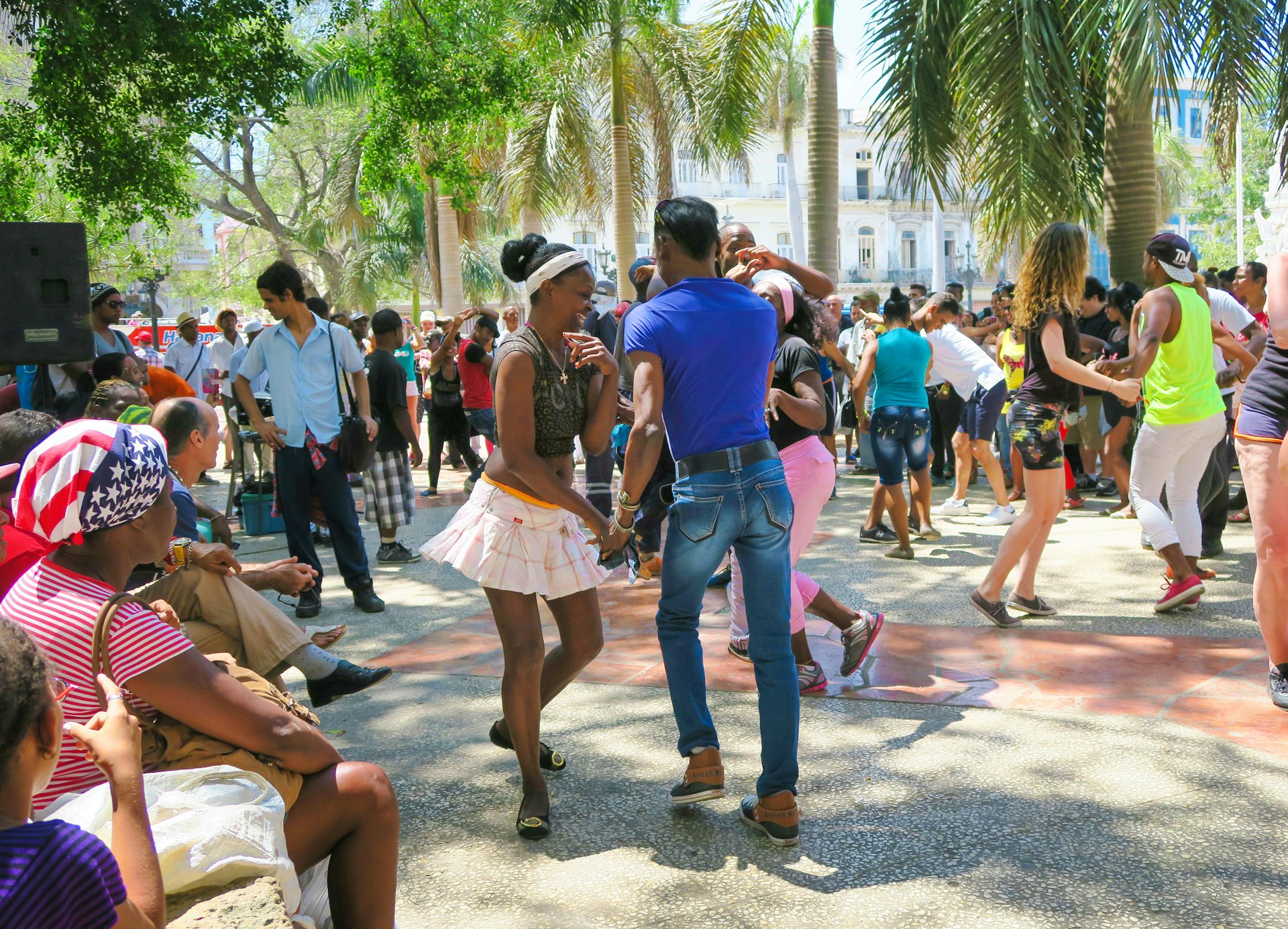
14. Keep valuables hidden to avoid attracting pickpockets
Havana is a safe city and mostly bereft of violent crime. Pickpocketing is more common but not rampant, and it’s mostly avoidable if you take a few basic precautions.
Wear a money belt, use safe boxes in hotel rooms and don’t flash your cash in public. Walking around with your wallet on display in your back trouser pockets is also a no-no.
15. Don’t change money in the street
Cuba’s widespread black market offers all sorts of options when it comes to changing money, but don’t be talked into exchanging your foreign notes with unlicensed traders on the street. You run the risk of receiving estafas (forged notes) and other kinds of swindles.
16. Bring your own medicines
On one level, Cuba has a good health system – Cuban medics invented and quickly distributed three different COVID-19 vaccines – but it is perennially short of imported pharmaceuticals. Bring all the medications you think you’ll need, including prescription medicines and pharmacy essentials such as ibuprofen and paracetamol.
If you’d like to donate some medicines to the people of Cuba, it is currently possible to bring in 10kg (22lb) of medical supplies tax-free, but you'll need to pack them in a separate bag.
Rather than giving out stuff out willy nilly, it’s better to leave your donations with a trusted Cuban contact to distribute (if you’re staying at a casa particular, ask the owner).

17. Avoid sketchy cigars and other scams
Scams perpetrated by jineteros (hustlers) are commonplace and are generally preceded by friendly chitchat followed by elaborate stories about super-cheap cigars or expert guiding services. While jineteros can be persistent, they are rarely threatening; a polite but firm no gracias usually does the trick of dissuading them.
As a general rule, cigars sold on the streets are usually factory cast-offs or counterfeits of real brands. If you want the real thing, buy your cigars in state-run shops such as the Casa del Habano chain.
Guides can be hit or miss, and those who over-enthusiastically try to talk you into using their services often fall into the latter camp. The best policy is to get in touch with the reputable folks at Free Walking Tour Havana.
18. Beware of sidewalk obstacles
Havana’s sidewalks are filled with hidden – and not so hidden – obstacles. Fruit carts, uneven paving stones, dog droppings and uncovered manholes are just some of the hazards that could ruin your idyllic evening stroll. If you tend to walk around daydreaming or staring at your phone back home, pay extra attention in Havana.
19. Pack toilet paper
The pandemic made the provision of hand sanitizer more common, but the same can’t be said for toilet paper. Public toilets rarely provide supplies so carry your own roll or gravitate to four- or five-star hotels if you’re caught short in the city.
20. Don’t drink the water
Havana's tap water probably won’t kill you, but it can easily give you a little queasiness or an upset stomach.
Bottled water is easy to find and cheap, but to cut down on your plastic use, consider buying a travel water bottle with a built-in filter before you travel and refill it at your accommodations (unfortunately, there aren’t any public water fountains around the city).

